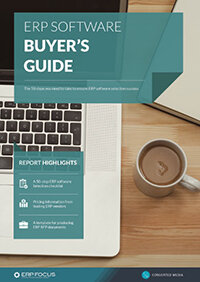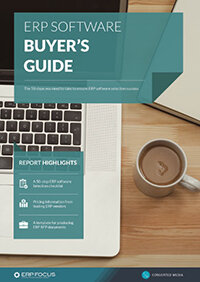A guide to the ERP life cycle
Old ERPs don’t last forever. Legacy systems become unsupported. Your infrastructure can’t keep up with the large swathes of data you should be using for business intelligence. Major headaches and glitches in workflow start to occur and agility evaporates and your organization falls behind.
This is when you have to consider retiring your incumbent ERP and switching or upgrading. This post explores the lifecycle of ERPs to help you stay ahead of the curve. Find out when it’s time to make a change…
What is the ERP life cycle?
The ERP lifecycle is how long a system remains usable. Research suggests that the lifecycle of ERP systems (particularly on-premise models) is getting shorter. Given the time and cost investment, it makes sense to try and prolong the life of your system as much as possible.
With this in mind, let's dig into the stages of an ERP lifecycle.
Stages of the ERP life cycle
Broadly, ERP life cycles tend to include the following stages:
- Implementation: Your chosen software is first implemented in the workplace while anticipating initial challenges such as staff adoption and workflow adjustments. Initially, the system rollout will conjure its fair share of problems. There will be a lack of understanding and confusion among staff. Plenty of questions will arise. Teething problems will occur, and the odd software bug may creep in.
- Optimization: The system is configured to the aforementioned business needs, including a customization process. This is to ensure that productivity is increased from a fluid workflow. This is an opportunity as much as it is a potential issue. You want better workflows; otherwise, you wouldn’t want a new ERP. But do be prepared for unanticipated disruption and have the right people standing by to resolve issues fast.
- Maintenance: This involves taking care of the system on a day-to-day basis. Creating new reports, changing the values of taxation to comply with legislation, and responding to user requests. Often, maintenance is in part covered by the service level agreement, requiring a license fee paid to the vendor. If the ERP is particularly complicated, you may need third-party help to maintain the system. This additional cost needs to be factored into your accounting system.
- Extension and scalability: As your business evolves, extend your ERP system's capabilities by integrating new modules, such as business intelligence or customer service tools. Plan for these additions during the evaluation phase to minimize disruptions.
- Decaying performance: Over time, your ERP system may struggle to meet growing demands, leading to increased workarounds and integration challenges. Recognize these signs as indicators that your system may be nearing the end of its effective life.
- Reimplementation: similar to the initial rollout phase. Based on experience, most businesses try and get the features they need from a vanilla ERP. This reduces customization needs, time, and cost.
It is easy to confuse the system lifecycle with the ERP implementation lifecycle. This is not the lifecycle of the whole system but the lifecycle of the implementation period. Normally, this lasts 6-12 months.
More on ERP legacy system decay
At some point, it is going to be evident that the cost and time needed to maintain the system are too much. It becomes painfully clear that the system no longer fills business requirements, and complexities make continued maintenance unviable.
This takes the form of staff having to use an increasing number of workarounds. The system no longer talks to other systems you use, or new systems have to be introduced to compensate.
Final thoughts
It is prudent when assessing the viability of a vendor offering to take into account the maintenance factor. Being able to easily maintain the system prolongs the life of the ERP, providing greater ROI.
This should be part of an assessment of any ERP system and considered a mission-critical factor.
Given the importance of an ERP system, it is good practice to ensure that the team that assesses your ERP comprises end users, compliance, and maintenance teams.
Try and implement all modules at the start of the process. Think ahead and take a holistic view. It is easier to implement modules at the start than after rollout has occurred.
Given how licensing can become an issue, it is important to clarify this aspect to avoid nasty cost surprises.
If you make the right ERP system choice, you will have a system that improves workflow and significantly increases ROI.
Free white paper

ERP software buyer's guide
Save hours of ERP selection research with this comprehensive buyer's guide

Featured white papers
-

ERP Software Pricing Guide
Get the latest pricing information on over 80 popular ERP systems, and learn how to budget for your ERP project in our free guide
Download -

ERP Implementation: 9 steps to success
The 9 proven steps you should follow when implementing ERP
Download -

ERP Implementation Checklist
Over 120 actionable steps to implementing a new ERP successfully
Download
Related articles
-

The case for multi-tier ERP implementations
Learn more about multi-tier ERP implementation and why you might need one
-

Secret KPI: Why Your ERP Implementation Team Matters More Than Software
Learn how Godlan ensures successful ERP implementation for manufacturers with proven strategies &...
-

An example ERP implementation team structure for your project
Learn about three key elements of an ERP implementation team and the individuals who contribute w...

